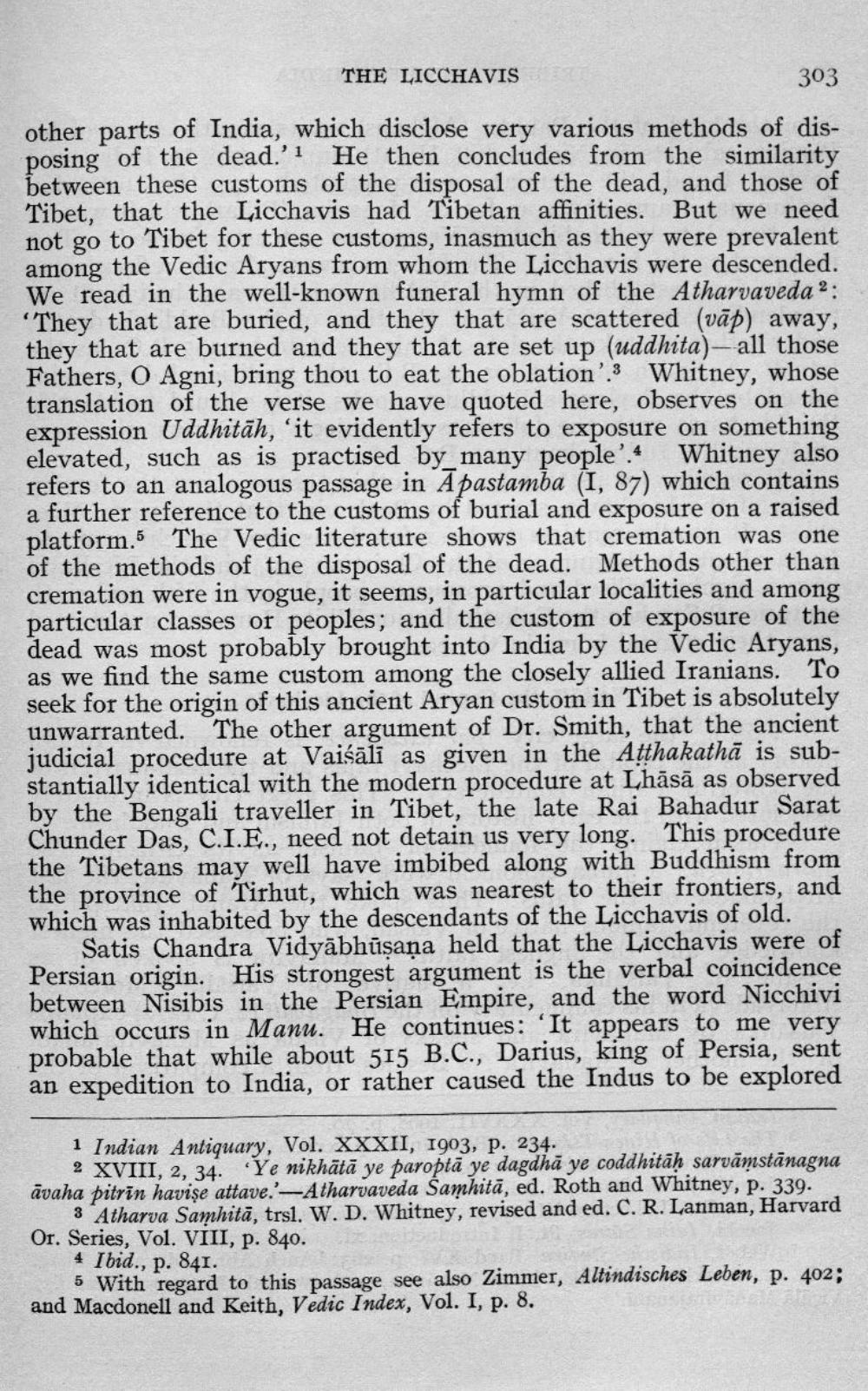________________
THE LICCHAVIS
303 other parts of India, which disclose very various methods of disposing of the dead.'1 He then concludes from the similarity between these customs of the disposal of the dead, and those of Tibet, that the Licchavis had Tibetan affinities. But we need not go to Tibet for these customs, inasmuch as they were prevalent among the Vedic Aryans from whom the Licchavis were descended. We read in the well-known funeral hymn of the Atharvaveda 2: "They that are buried, and they that are scattered (vāp) away, they that are burned and they that are set up (uddhita)- all those Fathers, O Agni, bring thou to eat the oblation's Whitney, whose translation of the verse we have quoted here, observes on the expression Uddhitāh, 'it evidently refers to exposure on something elevated, such as is practised by many people'.4 Whitney also refers to an analogous passage in A pastamba (I, 87) which contains a further reference to the customs of burial and exposure on a raised platform. The Vedic literature shows that cremation was one of the methods of the disposal of the dead. Methods other than cremation were in vogue, it seems, in particular localities and among particular classes or peoples; and the custom of exposure of the dead was most probably brought into India by the Vedic Aryans, as we find the same custom among the closely allied Iranians. To seek for the origin of this ancient Aryan custom in Tibet is absolutely unwarranted. The other argument of Dr. Smith, that the ancient judicial procedure at Vaiśālī as given in the Atthakathā is substantially identical with the modern procedure at Lhāsā as observed by the Bengali traveller in Tibet, the late Rai Bahadur Sarat Chunder Das, C.I.E., need not detain us very long. This procedure the Tibetans may well have imbibed along with Buddhism from the province of Tirhut, which was nearest to their frontiers, and which was inhabited by the descendants of the Licchavis of old.
Satis Chandra Vidyābhūṣaṇa held that the Licchavis were of Persian origin. His strongest argument is the verbal coincidence between Nisibis in the Persian Empire, and the word Nicchivi which occurs in Manu. He continues: 'It appears to me very probable that while about 515 B.C., Darius, king of Persia, sent an expedition to India, or rather caused the Indus to be explored
1 Indian Antiquary, Vol. XXXII, 1903, p. 234.
2 XVIII, 2, 34. Ye nikhātā ye paroptā ye dagdhā ye coddhitāḥ sarvāmstānagna āvaha pitrin havişe attave.'-Atharvaveda Samhitā, ed. Roth and Whitney, p. 339.
3 Atharva Samhitā, trsl. W. D. Whitney, revised and ed. C. R. Lanman, Harvard Or. Series, Vol. VIII, p. 840.
4 Ibid., p. 841.
5 With regard to this passage see also Zimmer, Altindisches Leben, p. 402; and Macdonell and Keith, Vedic Index, Vol. I, p. 8.




